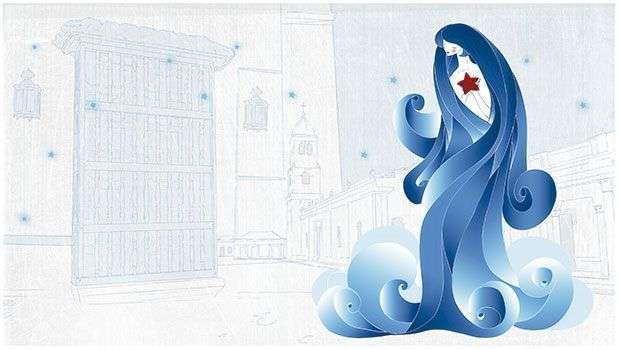When we Cubans say La Bayamesa, we immediately associate it with something very beloved, a powerful symbol of national identity. It evokes different works and moments under the same name. It is the music of the first national anthem composed by Perucho Figueredo in 1968. In this case, Cuban patriots were searching for a relationship with the French Revolution and its La Marseillaise.
In the 20th century (in 1918), the great composer Sindo Garay composed those precious notes—in a song that bears the same title, but with the added name of Mujer Bayamesa (“Bayamo Woman”)—and at some point we have all hummed “lleva en el alma…” (“carries in her soul…”).
In this article, I would like to focus on the first song, chronologically speaking, the one from 1851. The authors of this sentimental journey were the important poet José Fornaris, the lovesick musician Francisco Castillo, and a young lawyer with advanced ideas who had studied in Europe and went by the name of Carlos Manuel de Céspedes. He still had not freed his slaves, and nobody referred to him yet as the Father of our homeland.
Dying of happiness and love
The window of the beautiful Luz Vázquez , which looked out onto San Salvador street in Bayamo, could be considered as a tableau of infatuation, or the terrain of gallantry; an area closed in with railings that propitiated wooing but made betrothal difficult. The elements of this small space and the masculine face’s fleeting visit remind us of Lorca and Bernarda Alba, who used to call her daughters “window-sitters” in an disparaging tone.
In reviewing the lyrics of this lovely song and taking into account the commentary of its chroniclers, the idea grows stronger that this composition, a conspiracy of the impassioned Castillo and his friends, is about the reconciliation of a couple that has had a temporary falling out. It does not seem to be about a possible fiancé reaching out his trembling fingers, pursuing a profile, or wondering about a whisper in the dark, but about a young husband who does not want to lose his beautiful brunette and who serenades her. The formidable line of “dying of happiness and love” is preceded by others that evoke moments of loving fulfillment.
The tenor Carlos Pérez sang this melancholy anthem on the night of March 27, 1851, seeking as his reward to replace anger with loving memories, and for Luz to let her face be seen in the Cuban night.
Fornaris forgets literary glory for a while; Céspedes recurs to the refinement that he obtained in his university years in Havana and Barcelona and sets out to accomplish something important, a more intimate, but not a lesser task: to bring about the happiness of a couple. While many places in Cuba are named after the great Carlos Manuel for his role in the independence struggle, the street in Bayamo—where Luz Vázquez seems to always come to her window—is now named Céspedes in memory of the musical accomplice to the continuation of a passion and the flowering of a family.
Do you not remember, gentle woman from Bayamo,
that you were my dazzling sun,
and smiling upon your languid brow
a soft kiss I planted with love?
Do you not remember that happy time
when your pure beauty enraptured me
and on your breast I bowed my head
dying with love and happiness?
Come to your window railing smiling;
come and listen, lovingly, to my song,
come, do not sleep, turn to my tears,
alleviate my gloomy pain.
Remembering past glories,
let us dispel, my darling, our sorrows,
and bow both of our heads,
dying with love and happiness…
Editor’s note:
Luz Vázquez y Moreno, born in 1831 in the city of Bayamo. Considered one of the city’s most beautiful women, she married Francisco del Castillo y Moreno and they had seven children.
People say that the beautiful serenade that took place under the Luz Vázquez’s window on March 27, 1851, was a successful attempt by her husband to win back his wife. Luz was about to leave him after finding out he had been unfaithful to her. In desperation, Francisco recurred to the complicity of his cousin Carlos Manuel de Céspedes and his friend José Fornaris, who composed the lyrics, and Francisco and Carlos Manuel put music to what is now known as Cuba’s first romantic song.
It was a serenade of patriots. Carlos Manuel de Céspedes was the originator of Cuba’s independence struggle. Most of Fornaris’s poetry reflected his passion for Cuba. Francisco, who had pro-independence ideas, died one year before the start of the war, but Luz and their children joined the struggle from the very start. She was one of the first Bayamo women to set her own house on fire when it became clear that the Spanish would retake Bayamo in the year 1869. After that, she took her children and left for the swampland, and she lost them one by one in the struggle.
She returned to her house in ruins fleeing the persecution of the Spanish army and there she lost her two daughters. Embracing one of them, desperate with sadness, Luz Vázquez died, the great woman who inspired one of Cuba’s most beautiful songs.
On the site where Luz Vázquez’s home once stood, now there is a commemorative building, at No. 160 Calle Carlos Manuel de Céspedes, between Perucho Figueredo and Lora streets, in the El Cristo neighborhood.










